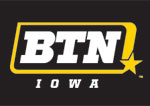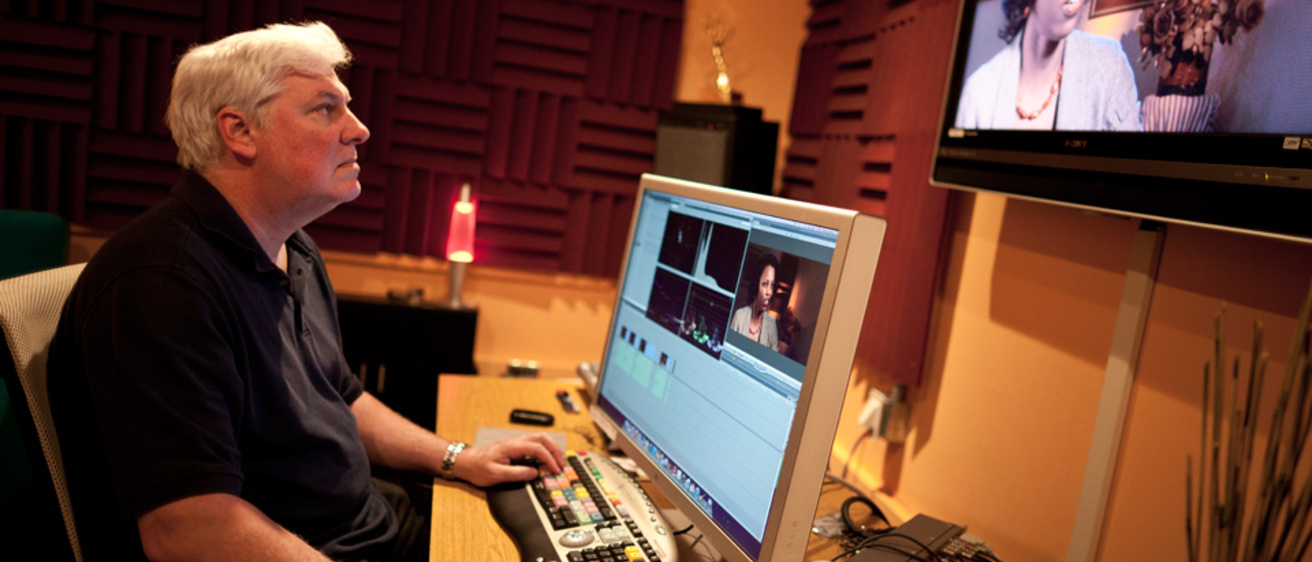When it launched in August 2007 BTN—the Big Ten Network—was the first nationally distributed network dedicated to a collegiate athletic conference. It now carries more than 850 sports events across multiple platforms each year, and is available to about 80 million households.

But BTN also has proven a way for the University of Iowa and other schools to turn the spotlight on subjects beyond sports.
Since the network’s inception, the university has produced and aired interviews with acclaimed writers; documentaries on pioneering orthopaedic surgeon Ignacio Ponseti, the Iowa caucuses, the Hawkeye Marching Band, and other subjects; and a campus news magazine that examined everything from the flood of 2008 to UI priorities like sustainability and community engagement. (See examples on the university's YouTube channel.)
“We’re grateful to have a broadcast partner that understands not just the power of the brand that is Big Ten athletics, but also that we collectively are academic and research powerhouses with tremendous transformational stories to tell,” says Tysen Kendig, UI vice president for strategic communication. “BTN is firmly invested in helping us tell those stories.”
Elizabeth Conlisk, BTN vice president for communications and university relations, agrees. “We consider campus programming to be a part of our mission," she says. "We are a different kind of network that is about more than sports."
With more than five years of programming under its belt, BTN and its partner schools last year took a hard look at what was working and where they could make improvements. They’ve since unveiled a new model for nonsports programming that aims toward increasing production values and creating higher-quality shows.
“Thanks to BTN programming, more people know that UI medical research is changing families’ lives, or that a world capital of literature is right here in Iowa." — Tysen Kendig
The new model lets schools focus on a smaller number of more substantive programs for broadcast time slots that reach more viewers. Previously, schools were given fixed time slots to fill each week.
For example, the UI is currently developing a documentary about last fall’s cross-campus collaboration with a director and playwright developing the first stage adaptation of Ralph Ellison’s novel Invisible Man.
"The Invisible Man project connected performing arts, faculty research, diversity initiatives, and opportunities for students," says Chuck Swanson, director of Hancher, a lead partner and sponsor on the project. "It's exactly the kind of initiative that tells the world what Iowa is all about."
In addition, BTN aired its first collaborative program earlier this year, a research-focused series called “IMPACT the World" that features contributions from several Big Ten schools in each program. To date, the series has showcased UI projects on rare brain diseases and computer-based simulations.
Collaborative programs broaden the audience beyond one specific school, and the topics covered so far emphasize groundbreaking research happening around Big Ten.
The network and its university partners also are developing programs on subjects that connect athletics with areas like academics and research. For example, when former Hawkeye quarterback Ricky Stanzi injured an ankle, the UI offered a look at how today’s sports medicine specialists treat and rehabilitate athletes.
BTN revenue is distributed equally among the Big Ten's 12 schools each year. Iowa's portion helps the UI Department of Athletics remain self-supporting, among just a handful of NCAA Division I programs that operate without any state funding or tuition dollars.
A portion of that revenue also supports video production staff in University Communication and Marketing. They contribute to the network’s collaborative programming, create UI shows pitched for primetime broadcast, and develop other projects that tell the UI story.
“Our unique partnership with BTN is the envy of schools from other conferences,” says Kendig. “The university’s share of BTN revenue is helping us produce more compelling content that brings our great stories to the world, whether it’s slated for BTN broadcast, UITV, or the Web. It’s allowed us to modernize our communication infrastructure and reach many more people across the board.
“Thanks to BTN programming, more people know that UI medical research is changing families’ lives, or that a world capital of literature is right here in Iowa,” Kendig adds. “BTN has provided us with the platform and support that allows us to show audiences across the country what our university is all about beyond athletics.”
